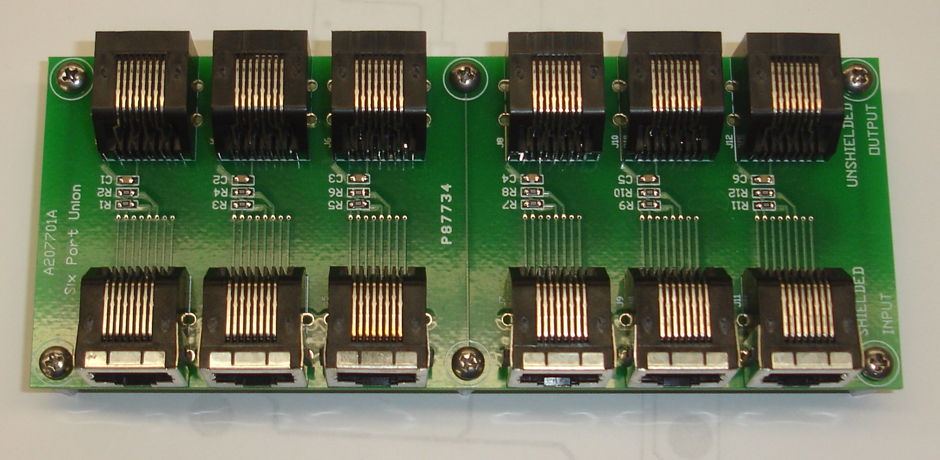The Six-Way Cable Union (A2077) provides connection for six pairs of LWDAQ cables. Its physical dimensions match exactly those of the Six-Way Patch Panel (A2059). We can populate the six-way union with any combination of shielded and unshielded eight-way modular sockets (RJ-45 jacks). All existing shields are connected together, and connected to the mounting screws. The zero-volt conductor of each connected pair of cables is connected to the mounting holes either with a capacitor or with a 0-Ω resistor, depending upon the type of grounding we want the union to perform. The six unions may be cut apart from one another to produce individual LWDAQ cable unions.

According to the LWDAQ policy on grounding, which is designed to avoid ground loops in a large system, the input connectors must provide a high-frequency path to the local chassis ground, but no low-frequency path. The output connectors should provide no shield at all, so that the shields of the outgoing cables will not be connected to one another. Thus the default configuration of the A2077 is for the input connectors to be shielded and the output connectors to be unshielded, as shown above.
The A2077 provides a pull-up resistor for the LWDAQ T+ line and a pull-down resistor for the T− line. These make sure that the outgoing T logic signal is not corrupted by local noise sources when it is left high-impedance. The following versions of the A2077 are defined.
| Version | Description |
|---|---|
| A2077A | Six-Way Union, 0-V to Shield with 10-nF Capacitors, Shielded Input Connectors |
| A2077B | Six-Way Union, 0-V to Shield with 0-Ω Resistors, Shielded Input Connectors |
Note: All our schematics and Gerber files are distributed under the GNU General Public License.
S2077_1: Single Union, Repeated Six Times.[13-SEP-12] A207701A layout complete.
[17-DEC-12] One A2077A and one A2077B built and tested in the Long Guide Tube (LGT), where they take the place of a 6-Way Repeater (A2059) and give improved noise immunity.